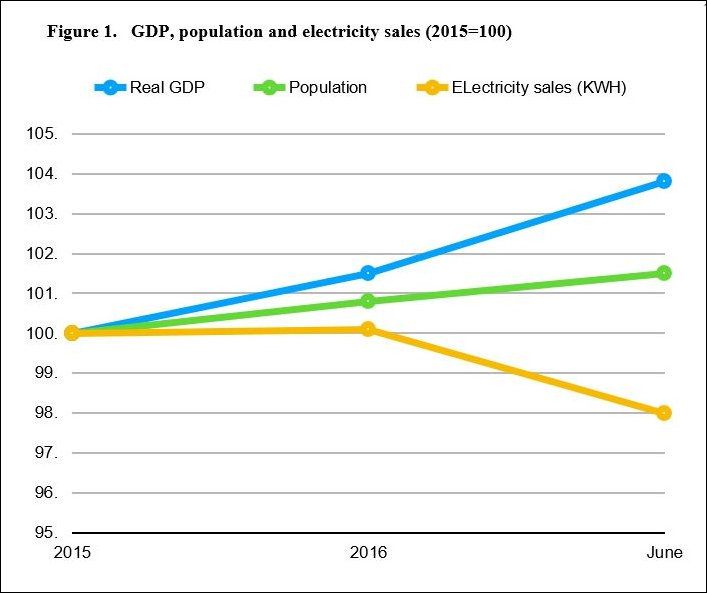
Source: Oilprice.com
U.S. electricity consumption fell 2.1% in 2017, according to Oilprice.com. As energy-efficiency measures have taken hold, electricity sales have declined seven in the past 10 years. Such numbers do not bode well for electric utilities banking on increased demand growth to justify construction of new power plants. A big question is the extent to which national trends apply to Virginia.
Virginia’s economy differs from the national economy in one important way: The Old Dominion has become a dominant player in the data-center business. Indeed, one could argue that data centers are the biggest economic-development success story in Virginia of the past 10 to 20 years. Data centers consume vast amounts of electricity. And if we want more data centers, which provide a handful of highly paid jobs and loads of tax revenue, we will need to ensure a reliable supply of electricity, preferably renewable.
Dominion Energy Virginia has based the long-range planning in its Integrated Resource Plan (IRP) on an anticipated 1.5% annual growth rate in electricity demand — considerably stronger than demand growth nationally. PJM Interconnection has suggested that Virginia’s growth rate will be slower, but Dominion defends the forecast based on a more aggressive projection in the number of data centers.
The public interest calls for sufficient electricity supplies to accommodate the growing data-center industry and, down the road, a surge in demand from electric vehicles — but not so much as to burden rate payers with excess capacity. Clearly, the trend in electricity demand bears close watching.


